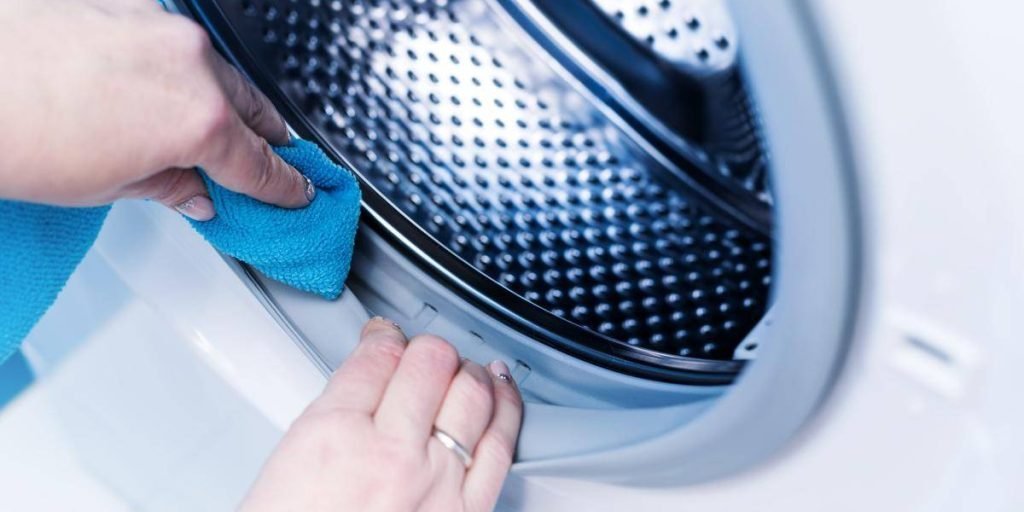Easy Hacks on How to Clean a Washing Machine Naturally

Many of us don’t think that a washing machine needs to be cleaned once in a while. I mean, it is meant to clean our clothes, why can’t it clean itself?
Yet, soap scum, bacteria, mildew, and other gross grime build up in a washing time and can make it smelly over time. In our post today, you will learn how to clean washing machine naturally using locally available ingredients.
Cleaning Washing Machine with Vinegar and Baking Soda
You can use baking soda and distilled white vinegar to clean your washing machine. Vinegar, which contains acetic acid, is not powerful enough to kill molds and thus if you have a filthy washing machine, you will need to clean it severally using vinegar to kill all of the molds. To help with odor, I recommend using baking soda to deodorize your machine. Both are natural ingredients and will help remove most of the limescale that has accumulated in your machine.
Procedure for cleaning your washing machine using baking powder and vinegar;
Quantities required;
* ½ cup of baking powder
* 1 liter (1 quart) of vinegar
If you have a front loader washing machine, set the water temperature to 190 degrees Fahrenheit (90 degrees Celsius) and choose a long wash cycle. Add baking soda to the detergent dispenser and pour the vinegar into its drum. Power on your washing machine to begin the cleaning process.
If you have a top loading machine, set the temperature to 194 degrees Fahrenheit or 90 degrees Celsius. Pour white vinegar into the machine detergent dispenser and add baking soda to the softener dispenser. Power on the machine and let it agitate for one minute to combine the two. Stop the cycle and let it soak for one hour before letting it finish the wash cycle.
Using Hydrogen Peroxide to Clean Your Washing Machine
Hydrogen peroxide can substitute chlorine breach. It is sold as 3 percent diluted liquid solution and serves as an excellent multipurpose cleaner. Don’t go for solutions with higher concentrations as they are meant for commercial cleaners. Even if you have to buy highly concentrated hydrogen peroxide, you will need to dilute it before use. This can pose health risks because of the safety risks involved in handling solutions with a concentration exceeding 3 percent. Hydrogen peroxide has a lifespan of one year after opening and should be stored in a dark place for it to remain effective.
Hydrogen peroxide has antiviral and antibacterial properties. It removes lime scale and kills molds and is safer than chlorine bleach as it doesn’t leave behind residues and toxic fumes. What makes it safer for the environment than chlorine is the fact that it breaks down into water and oxygen. You can use it with hot water to enhance its effectiveness. However, a major downside of hydrogen peroxide is that it takes longer to break down lime scale, and therefore you will need to leave it for at least three hours to soak in your machine. For front loaders, this is not possible, and thus you may need to run it through in two cycles.
Procedure of using it;
Quantities required;
* One liter (one quart) of hydrogen peroxide
If you have a front loader washing machine, set water temperatures to 194 degrees Fahrenheit or 90 degrees Celsius and choose a long wash cycle. Add hydrogen peroxide to a washing machine’s drum and begin the cycle. Choose the rinse cycle to ensure all traces of this natural cleaner are removed.
For a top loading machine, set the water temperature to 194 degrees Fahrenheit or 90 degrees Celsius and wait until your machine has filled with water before adding the hydrogen peroxide. Allow the machine to run for one minute to combine water and peroxide before stopping the cycle. Soak for at least three hours before stopping the cycle. Choose a rinse cycle to remove all traces of peroxide.
Cleaning a Top Loader Washing Machine
Soak a paper towel in white vinegar or hydrogen peroxide and use it to wipe the opening of your machine. Try to reach the top edged and tub rim, and all the areas water can’t reach.
Cleaning a Washing Machine Dispenser
Separate the dispenser from the machine and fill your tub with hot water. Add half a cup of vinegar and use a paper towel to scrub away any buildup. Clean inside the area where the dispenser sits to remove molds that may have formed. You can also use an old toothbrush or pipe cleaner to get into the crevices.
Bottom Line
To minimize buildup of molds, odors, or mildew in your washing machine, keep their lids open after every use to allow air to dry your machine. Clean your washing machines regularly using the above methods every few months.








